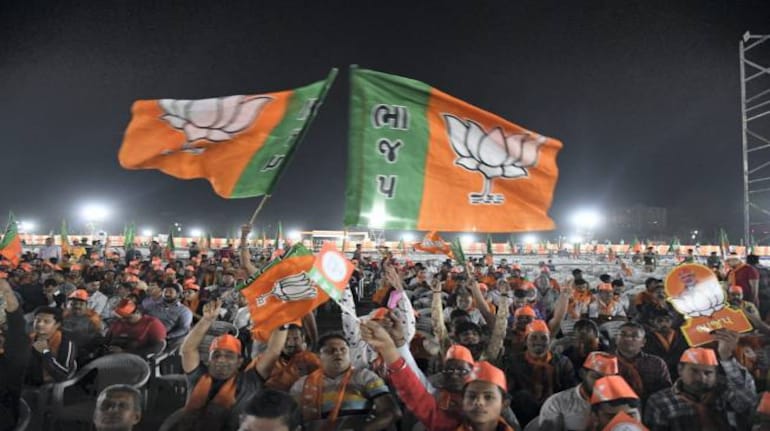



In recent years, the people of Karnataka have seen more than their fair share of political instability, coalition governments, and the associated drama and trauma that come along. Two national parties — the Congress and the Bharatiya Janata Party, and one regional party — the Janata Dal (Secular) — continue to occupy the poll battle space, though not equally, across the state. The question is whether the state will see a hung assembly in 2023, too. And will the JD(S) seize the spotlight once more, despite winning the least number of seats among the three?
The Karnataka poll campaign witnessed a sudden spin in the urban and semi-urban areas for a couple of days with the Congress’ election manifesto mentioning its intention of banning the Bajrang Dal, a right-wing outfit. But the momentum faded. Finally, the arithmetic by poll pundits has boiled down to three Cs: caste (including sub-castes:), cash, and culture (meaning, the resort culture that may pop up, post-results).
For example, in 2018, the elections threw up a hung assembly with no party securing even a simple majority of 113 in a House of 225 (including a nominated member). In 2013, the Congress bagged 122 out of the 223 seats for which elections were held. The voter turnout in the state was 70.23 percent. In 2008, the BJP emerged as the topper, winning 110 seats, but fell short of the majority.
Between 2004 and 2008, with no party able to get a majority to form the government in 2004, the lowest scorer (among the three main parties) the JD (S) with 58 seats — emerged as the kingmaker in Karnataka. The Congress had won 65 seats, while the BJP had 79. Keeping aside the top scorer, the JD(S) and Congress shook hands to form the government. SM Krishna, in his capacity as chief minister, had led the party to elections in 2004. For the JD(S), both Krishna and the BJP were unacceptable; it supported N Dharam Singh of the Congress for the chief minister post.
In 2006, JD(S) leader HD Kumaraswamy, son of former prime minister HD Deve Gowda, dumped Dharam Singh and bundled the JD(S) MLAs off to a resort. He then struck a deal with the BJP’s BS Yediyurappa to form the government. At the time of the second combo government, Kumaraswamy had told the BJP that he would be chief minister for 20 months and would leave the seat for the BJP for the next 20 months. But Kumaraswamy was no Vajpayee. At the end of his 20-month tenure, he refused to hand over the charge to Yediyurappa and brought down the government, pushing the state into President’s rule.
The second coalition saga began in May 2018. The Congress willingly partnered with the JD(S), handing the chief minister’s post to Kumaraswamy on a platter. His party had won just 37 seats, while the Congress had 80. Congress’s Dr G Parameshwara was deputy to Kumaraswamy. The JD(S)-Congress government survived for just over a year, until July 2019.
By then, the BJP, with 104 seats, had decided to increase its strength. It reduced the strength of the House by making 17 MLAs resign. Except for one independent, the others were either from Congress or the JD(S). Later, Yediyurappa became chief minister. Of the 17 who resigned, 15 faced the bypolls, and 12 became BJP MLAs. In 2021, Yediyurappa had to step down at the BJP high command’s direction. He was replaced by the incumbent chief minister, Basavaraj Bommai. The defectors and the ministerial berths they secured had caused much heartburn in the BJP.
Even in 2008, no party had a majority to take over the reins of the administration. The BJP had 110 seats. It poached seven MLAs from the Opposition and made them face byelections. Of them, five won and helped the BJP remain in power. But the majority won in this manner didn’t help. Between 2008 and 2013, the BJP had three chief ministers. Yediyurappa had to step down after facing corruption charges. He appointed DV Sadananda Gowda only to pull him out later and anoint Jagadish Shettar as the chief minister.
Whether as a coalition or a single-party government, since 2004 Karnataka has seen political instability due to greed for power and the lack of maturity to make a coalition work. Between 2013-2018, the Congress’s Siddaramaiah had a stable government. But in 2018, the party secured only 80 seats.
Discover the latest Business News, Sensex, and Nifty updates. Obtain Personal Finance insights, tax queries, and expert opinions on Moneycontrol or download the Moneycontrol App to stay updated!
Find the best of Al News in one place, specially curated for you every weekend.
Stay on top of the latest tech trends and biggest startup news.